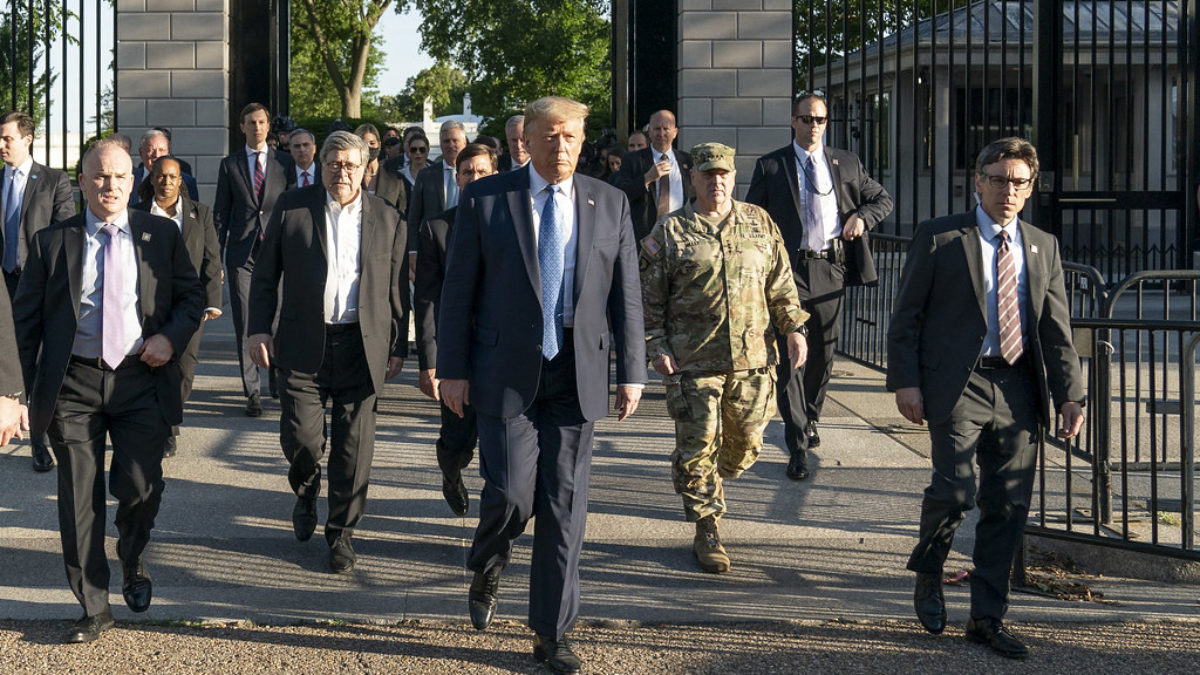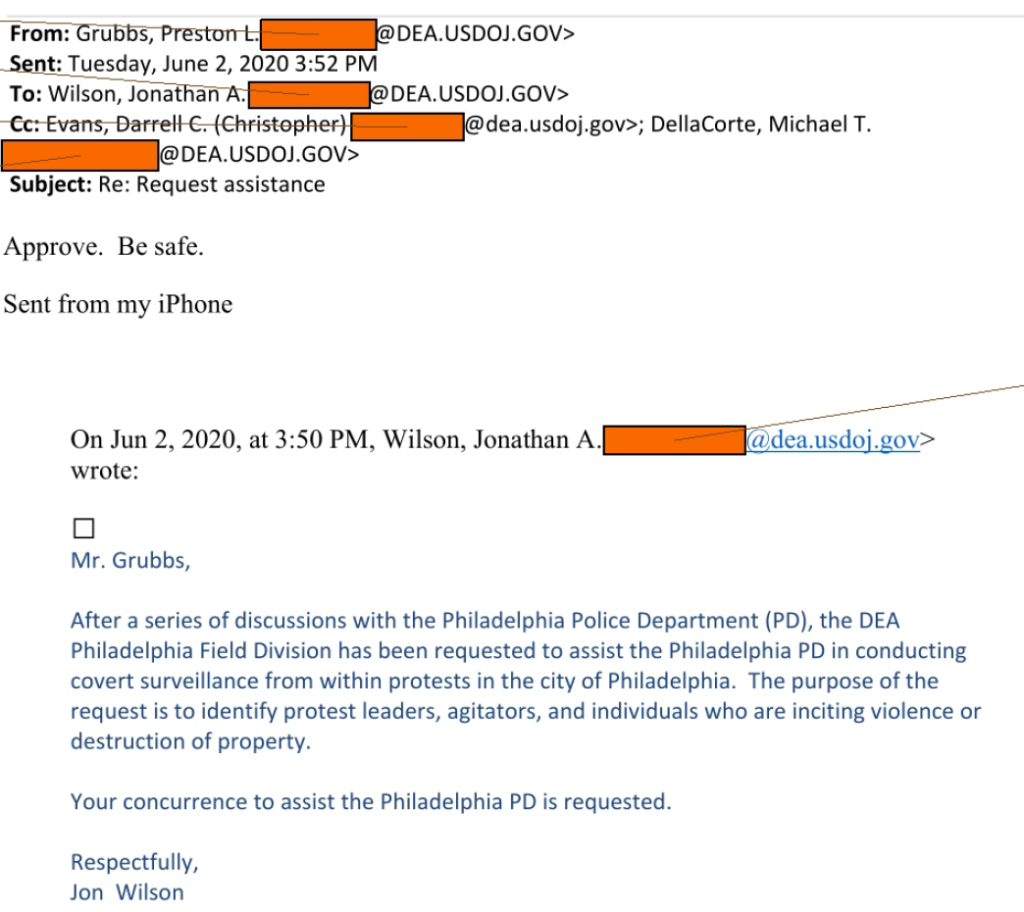Emails show DEA’s “covert surveillance” of racial justice protesters in Philadelphia, Chicago, Albuquerque

The Drug Enforcement Administration conducted “covert surveillance” on people protesting the killing of George Floyd last summer in Philadelphia, Chicago and Albuquerque, according to emails obtained by CREW. The operations involved the use of undercover DEA agents to “infiltrate” protests, social media monitoring and aerial surveillance by the DEA Air Wing.
Justice Department leadership authorized the surveillance efforts in May 2020, per a DEA memorandum revealed last year by BuzzFeed News. The decision—which significantly expanded the DEA’s law enforcement authority nationwide for 14 days—was decried by members of Congress and civil liberties advocates as an invasion of First Amendment rights.
Representatives Jerry Nadler and Karen Bass urged the Justice Department to “immediately rescind” the decision in a June 5 letter, calling it “unwarranted and antithetical to the American people’s right to peacefully assemble and to exercise their Constitutional rights without undue intrusion.”
The new emails, obtained by CREW as part of a Freedom of Information Act lawsuit, provide a glimpse into how the DEA utilized its expanded surveillance authority in three cities.
Philadelphia
In a June 2 email, the Philadelphia Police Department requested that DEA’s local Special Agent in Charge, Jonathan Wilson, assign agents to “infiltrate crowds” at protests “for intel purposes.”

Within 30 minutes, Wilson obtained approval from Principal Deputy DEA Administrator Preston Grubbs, the agency’s second highest ranking official, to conduct “covert surveillance from within protests in the city of Philadelphia” in order to “identify protest leaders,” among others.

A June 3 email from a Philadelphia police sergeant provided “operational information” for DEA agents assigned to surveil a protest later that day. The email instructed agents to download a “communications app” to carry out their “surveillance operation,” even though DEA “doesn’t normally use” the app. The name of the app is redacted in the emails released to CREW.

An attachment to the June 3 email titled “Philly Riot Suspects.pdf” is redacted in its entirety.
Another operational email instructed DEA agents to dress so they could “b[l]end in with the crowds. Masks and bag packs [sic] are a good idea.”
A June 4 email shows extensive social media monitoring of protests expected through the weekend, with event names such as “Peaceful March: South Street to City Hall,” “Mt. Airy Solidarity March,” “4th Annual Stop Killing Us (SKU) March to DC!,” “George Floyd – Peaceful protest,” and “Candle Light Vigil for Breonna Taylor.”
Another June 4 email shows that DEA’s surveillance operation continued at least through June 7. An Assistant Special Agent in Charge thanked agents for their “tireless[] dedication to this mission, along with the sweat and blisters.”
Albuquerque
The emails show similar DEA surveillance operations in Albuquerque.
On May 30, the Albuquerque Police Department requested that DEA provide agents for “undercover operations as needed” for “scheduled protest related events for the next few days.”

On June 5, DEA Special Agent in Charge Kyle Williamson sought and obtained Grubbs’ approval for the Albuquerque operation. Williamson specifically flagged anticipated protests by “Black Lives Matters,” among others.

The emails show another “surveillance support” request from the Albuquerque Police Department on June 11, which Grubbs likewise approved.
Chicago
In Chicago, Grubbs approved a June 3 request for the “DEA Air Wing” to be “on call to assist the Illinois State Police in the Chicago area” with surveillance efforts—which are referenced in the emails as “non-Title 21 duties”—until June 10.

A June 9 letter from 35 congressional representatives to the FBI, DEA, CBP, and the National Guard decried the use of aircraft and predator drones to “surveil American citizens and collect vast amounts of personal information.” Although the letter noted the memorandum authorizing the DEA to surveil protesters, it did not reflect knowledge that DEA specifically used aerial surveillance methods like those deployed in Chicago.
The extreme law enforcement response to racial justice protests last summer has rightfully spurred calls to rein in abusive domestic surveillance efforts, especially since the response appeared to be politically motivated. The American people saw one approach to policing when former President Trump and Attorney General Barr cleared Lafayette Square using tear gas for Trump’s photo op with a Bible, and quite another during the violent insurrection by Trump supporters on January 6. Understanding exactly what methods were used to surveil racial justice protests, and how they were implemented, is critical to stopping future abuses.